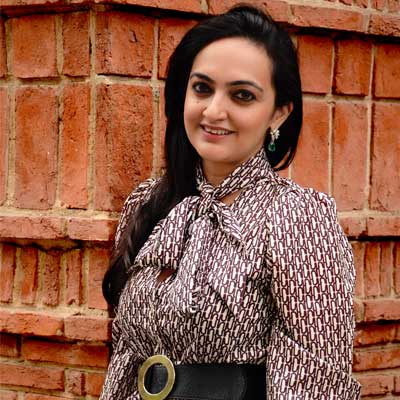– Rakhee Bedi Kumar
Founding principal at Rakhee Shobhit Design Associates, a multidisciplinary design firm delivering architecture, interior design and strategic services across India, Rakhee Bedi Kumar, has successfully designed and executed a diverse range of architectural and interior design projects in distinct fields of architecture for over 15 years.
CW DesignBuild spoke to Rakhee about the architecture as a profession, challenges and fluidity of design.
What is your vision for Rakhee Shobhit Design Associates?
At RSDA, our vision is to challenge ourselves further in the field of design and engage in unique project typologies we have not worked on before. With the world once again returning to normalcy, we are excited for the times ahead and the type of projects coming our way.
What are the key changes you have observed in the design industry over the last decade?
Various global factors and exposure have helped in the evolution of architecture and interior design. Nowadays, nothing is out of reach- from materials to colours to construction methods. Social media and travel opportunities help us stay globally-connected, making everything under the sun available and achievable. The design industry has become bolder with advanced experiments and intricate details that are easy to execute, maintain, and sustainable.
Explain to us the concept of ‘fluidity in design’.
Fluidity can be expressed in terms of volume and spatial arrangement, where the incorporation of defined spaces enables smooth circulation and movement. Fluidity can also be expressed in choosing a colour palette where different shades and tones merge into a balanced contrast. Similarly, fluidity can also be a visual experience where other materials and textures are incorporated seamlessly, creating a single bold statement.
What is the scope of architecture as a profession?
Today, architecture is not just about designing houses. The industry has branched out in various sectors creating a broad spectrum of career choices.
What are the key challenges you faced through your professional journey as an architect and how did you overcome them?
My professional journey so far has been truly gratifying. We have encountered many challenges on the way, and a good response to our work is what keeps us motivated and going. No matter how small or big the project is, receiving positive and emotional feedback from clients about our work is a personal and professional high. They value our job as professionals and the personal relationships we continue to maintain with them.
How would you define your style of design? How do you ensure that your projects bear your signature?
We follow a clean - contemporary design. The addition of boldness comes through various usage of materials and colour. The ability to transform the brief from the client into reality through carefully brewed in-house ideas and concepts, opulent yet practical - are key aspects that are integral to our design approach.
How do you approach design to accommodate aesthetic and functionality in commercial projects?
While developing projects across diverse scales and contextuality, we strive to achieve holistic design solutions with complementary details and enhance the whole. For instance, while designing the Vurve Salon, we used locally available materials to reduce energy consumption, thus promoting sustainability. An attempt has been made to create a holistic experience for the users through intricately planned design interventions. Distinctive forms and materials have been employed to disrupt monotonous and traditional practices.
How do you incorporate sustainability in your work?
Our design vocabulary centres around natural patterns and locally sourced materials where we prioritize the work of local artisans and skilled craftsmanship resulting in affordable luxurious spaces.
Tell us about the projects you are working on currently.
Currently, we are working on various projects consisting of luxury apartment interiors, retail spaces and many more. Multiple residences are upcoming where spatial design plays a vital role in circulation, buffer spaces and multifunctional spaces. We have been designing retail spaces pan India where the client’s vision is to create a fresh look for their brand, incorporating rustic and vintage looks with understated luxury.
As experienced professionals from the field of architecture, how would you advise youngsters to approach architecture as a profession?
It’s a whole new world out there so take a step at a time and trust the process. Keep designing, keep practicing, and you might just make it!




















